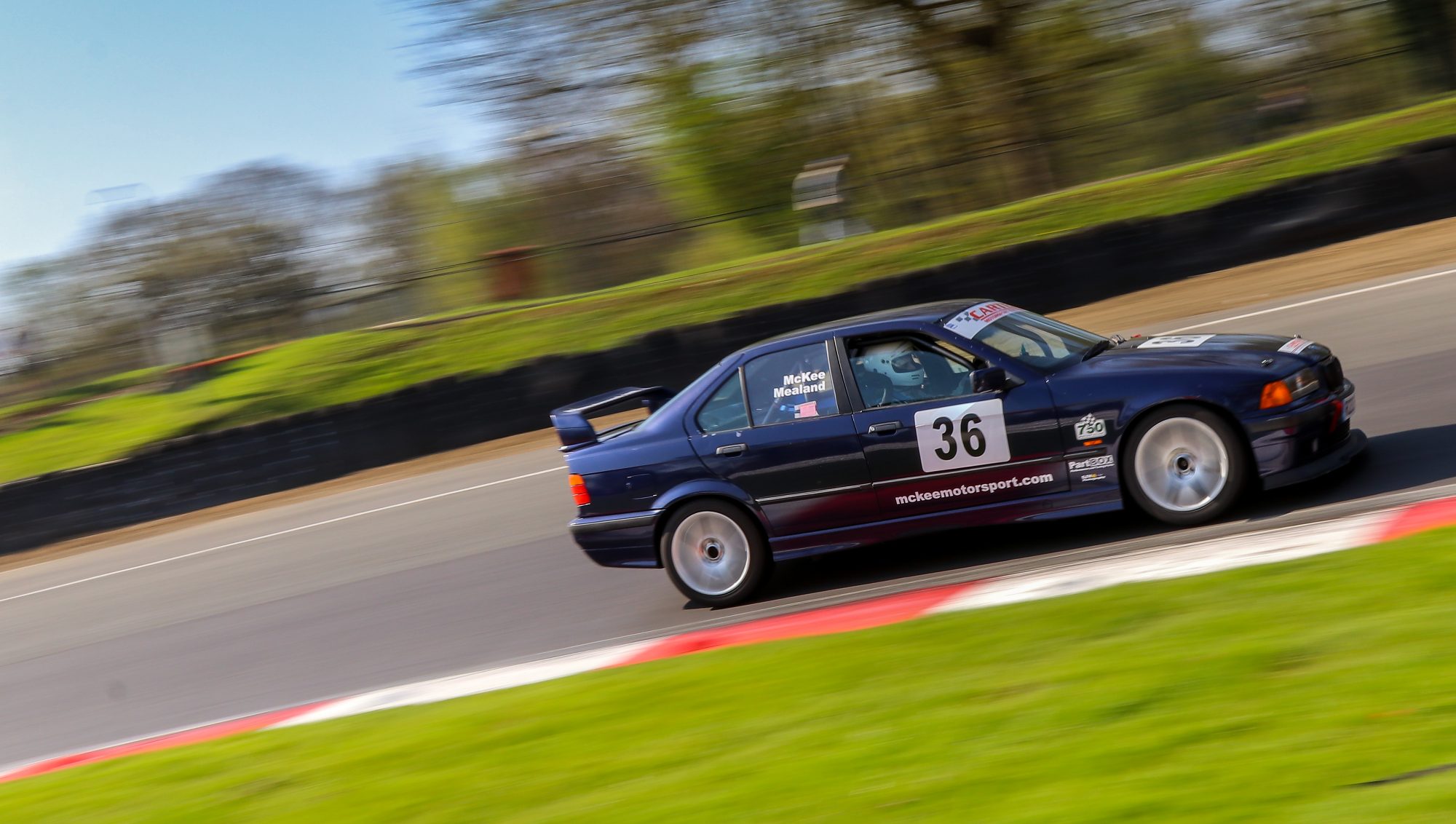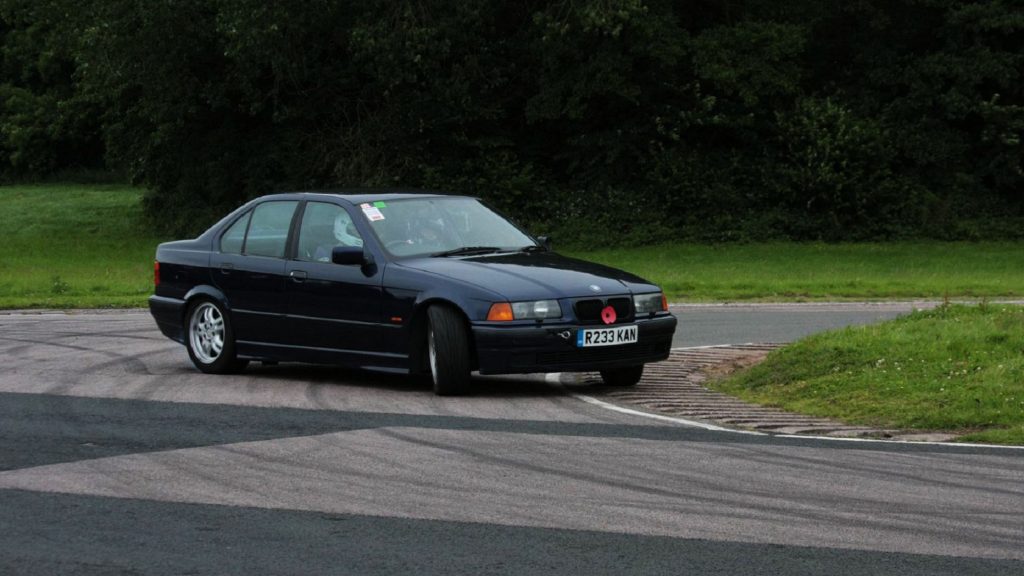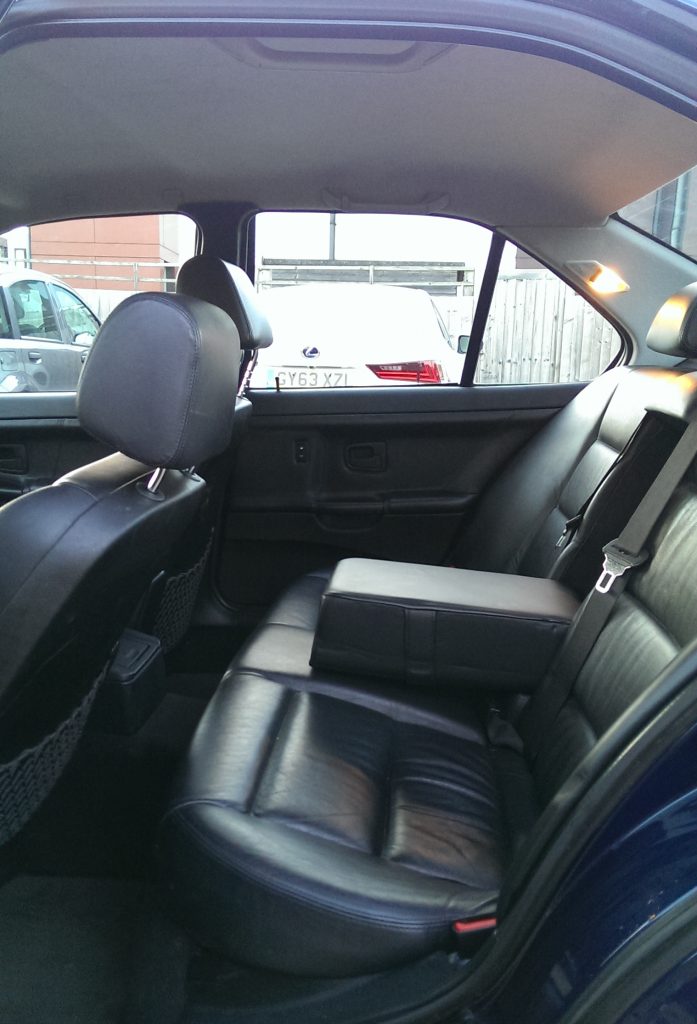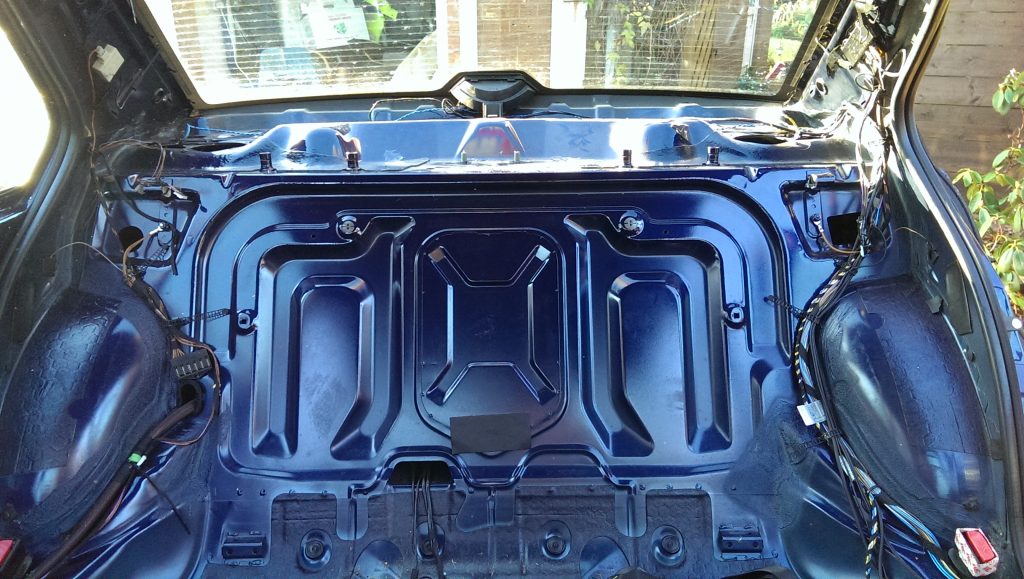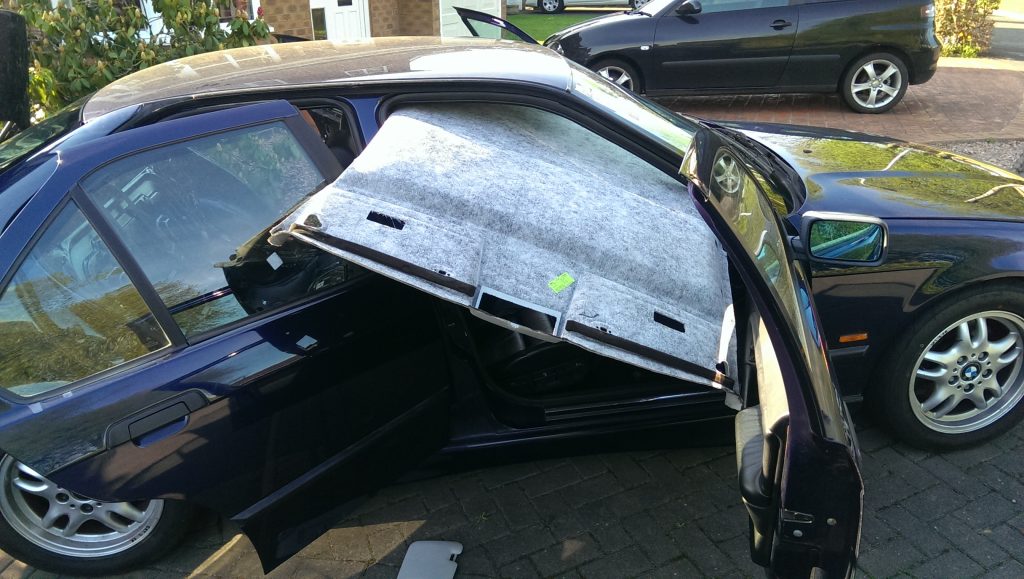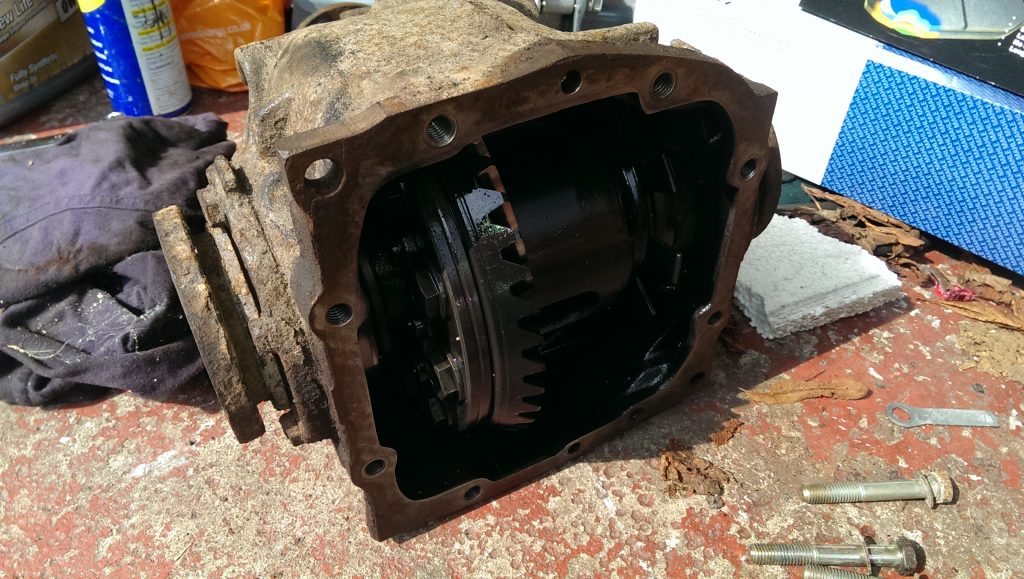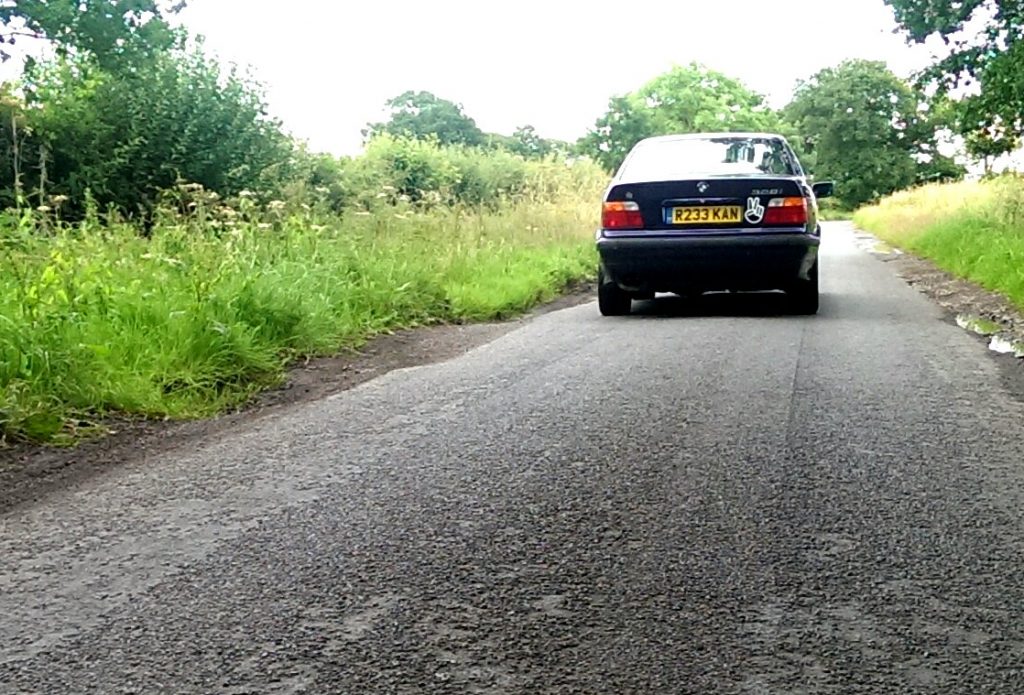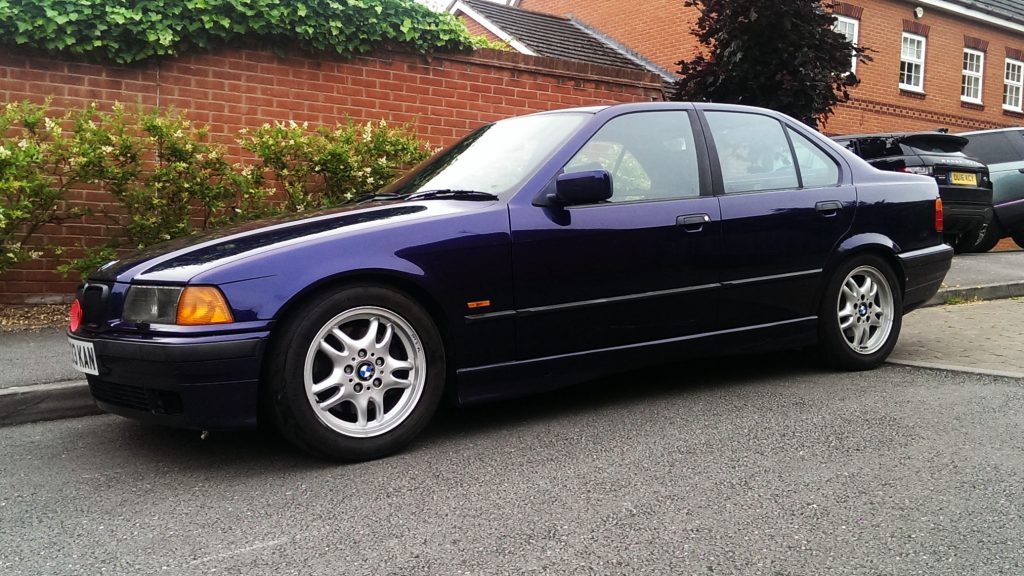A little over two years in, we start to get more serious about developing this car. Since the start there have been two key problems – it’s too heavy, and it keeps spinning up a rear wheel. Time to solve both of those!
I had never weighed this car, but it did come with a handy photo showing it on a weighbridge at 1360kg. It had an extra spare wheel and half a tank of fuel on board then, which means it should be 1318kg on its own. This seems about right as kerbweight for a standard E36 328i SE, and it’s not too bad against the 190bhp and 280Nm offered by the 2.8-litre straight-six.
Weight, though, is the enemy of performance and reducing it delivers you a compound benefit – a lighter car not only accelerates faster and corners better, it’s easier on its tyres and brakes. Better yet, a lighter car doesn’t need so big a cooling system, can get away with smaller brakes, needs less structural stiffness, can have smaller anti-roll bars and suspension springs… So it gets lighter still and the advantage grows and grows. Best of all, when you’re starting with a standard road car, a significant degree of lightness is free or even profitable to attain!
A full list of what’s been removed and what it all weighed will be added soon, for those of a similarly anal attention to detail. But between this “before and after” on the rear bench alone, we’ve lost 10.3kg of rear seat base, 4.9kg of rear seat squab, 6.0kg of insulation beneath it, 4.6kg of parcel shelf trim and insulation, and 2.5kg from each rear door card. The rear floor mats – just the rear ones! – weigh 1.3kg. So in this area alone, that’s 30kg gone.
Once I’d carved through the rest of the car, we had 70.0kg removed, all in an entirely reversible way. Even the stubborn bits like the headlining! I didn’t get too serious at this point – the carpet stayed, as did the audio system, the front door cards and all of the dashboard trim except the glovebox. This first pass at lightweighting the car only took me four hours or so – if you weren’t weighing everything that came out, three hours, and if you didn’t care at the condition of what you removed, probably 90 minutes flat to save the weight of an entire passenger! I can’t overstate how worthwhile that is for a car that’s used exclusively on track.
Here, then, is the solution to the other problem:
This is the LSD from an early 3.0 E36 M3. The only changed needed to fit this to a 328i is the output flanges, as the bolt pattern is different – but happily, this diff had been briefly run in a 328i rally car, so not only has that been done already, but we also know it works properly. I handed over £400 for it, which in mid-2016 was fairly cheap for an increasingly rare item, but they can still be found for this money on occasion.
Fitting this took the final drive ratio from 2.93 to 3.15 (7.5% shorter) and gives 25% drive locking. The effect is, as you’d expect, profound. On a dry road it became almost impossible to unstick the car on its NS-2Rs, it just powers on out and awaits your next question! It was very impressive, and the gearing change was welcome – where before third and even sometimes second could feel laboriously long, they’re now dealt with much more quickly and it feels “right”.
It also means you can leave number elevens, rather than just number ones…
All this sounds wonderful written down, but what does it translate to on a circuit? Curborough and the stopwatch had the answer. The car felt fantastic, noticeably quicker in a straight line and so much happier being hustled through the twisties. The ability to put the power down on corner exit was in a different league, and when you’d finished trying to be quick and tidy, it made lairy slides much more accessible too – hence the photo at the top, complete with Emily in the passenger seat! That day was the first time I’d hit the lockstops trying to hang onto a slide, and a whole new dimension to the car had been found.
But how much laptime did we gain?
Last time we visiting Curborough, I managed a 1:10.52, which felt pretty good at the time. This time? 1:08.18. A massive 2.34 seconds faster around a pretty short lap, thanks to these two relatively simple changes, and a car that felt so much better for it as well. Next up would a return to the very first circuit we ever drove, to find out what three seasons of practice, tweaks and development are worth…
Sam
